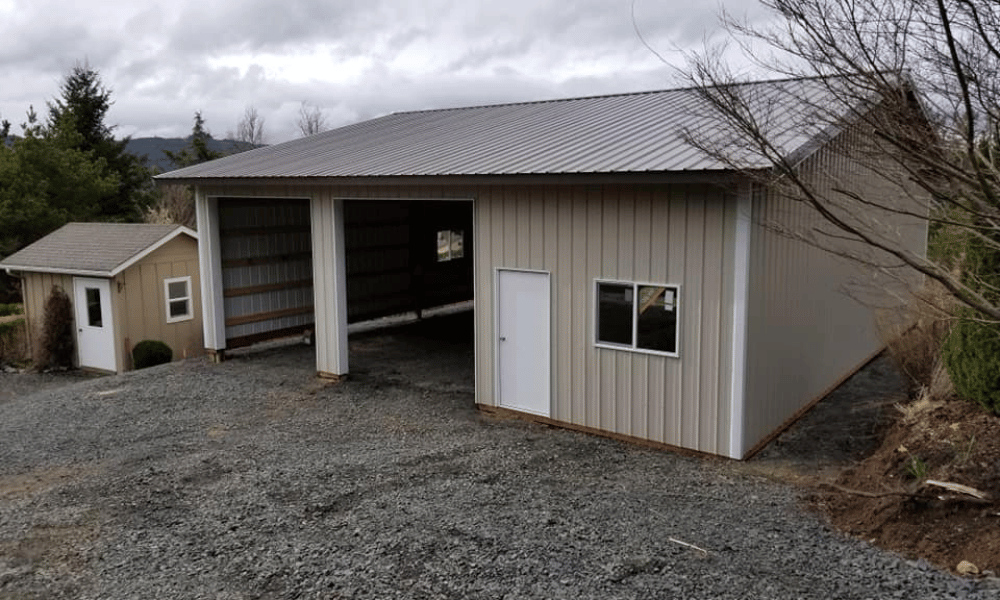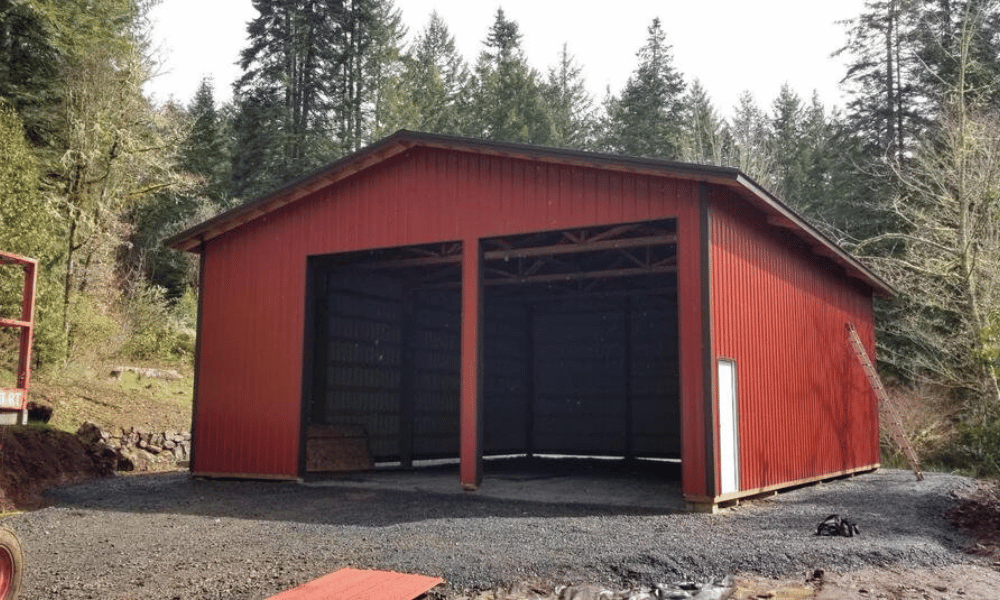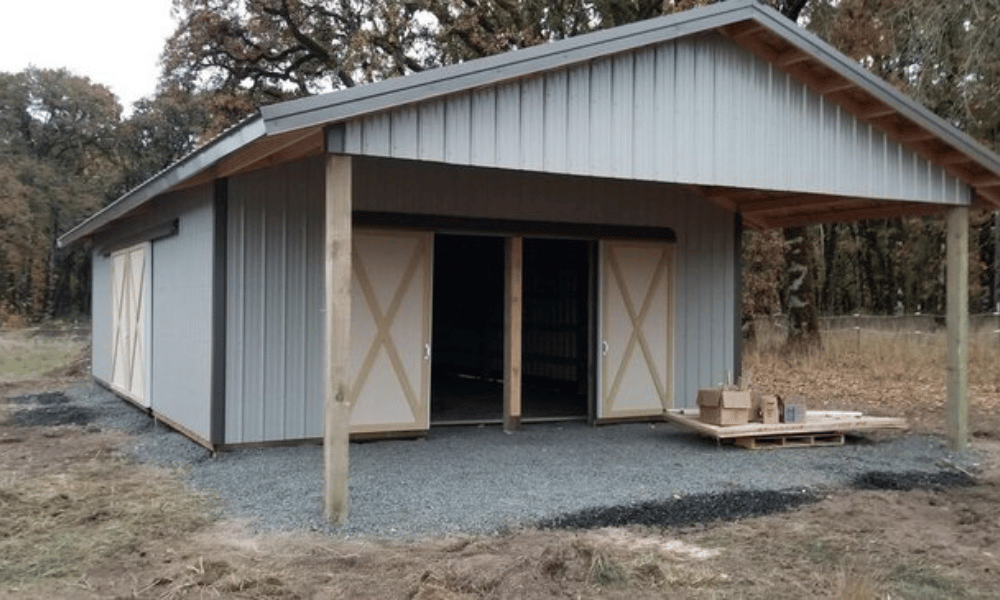In the world of construction and storage solutions, the debate between pole buildings and traditional garages has been a hot topic for many homeowners and builders alike. As we look at these two options, we’ll dive deep into the advantages, disadvantages, design possibilities, and costs associated with each. By the end of this article, you'll have a comprehensive understanding to help you make an informed decision about your next building project.
What Are Pole Buildings?
Pole buildings, also known as pole barns or post-frame buildings, are structures that use wooden posts or poles as their primary support system. This method of construction allows for large open spaces without the need for interior load-bearing walls. But what makes pole buildings stand out?
Key Features of Pole Buildings
- Post-Frame Construction: The poles are typically buried in the ground or set in concrete footings. This creates a sturdy foundation. Versatile Designs: Pole buildings can be customized for various uses—from workshops and storage to equestrian facilities. Lower Cost: Generally, they are more cost-effective compared to traditional garages due to less material usage.
Common Uses for Pole Buildings
Storage Solutions: Ideal for storing equipment, vehicles, or livestock. Workshops: Perfectly suited for hobbies or trades needing ample space. Commercial Spaces: Businesses often utilize pole buildings for their flexibility and cost-effectiveness.Traditional Garages Defined
Traditional garages generally consist of standard framing methods using 2x4s or 2x6s for walls with a foundation system like concrete slabs. They’re commonly attached to residential properties and serve specific purposes primarily related to vehicle storage.
Characteristics of Traditional Garages
- Standardized Sizes: Usually built according to specific dimensions that comply with local building codes. More Permanent Structure: Often requires a solid foundation that is less adaptable than pole structures. Aesthetic Requirements: May need to match existing home architecture depending on local regulations.
When Are Traditional Garages Commonly Used?
Vehicle Storage: Primarily designed to house cars and motorcycles. Home Workshops: Some utilize them as hobby spaces but usually have limitations in size. Utility Spaces: Often used for laundry or storage as part of the main residential structure.The Benefits of Pole Buildings Explained
So why might you consider a pole building over a traditional garage? Let’s explore several points that highlight their appeal.
Cost Efficiency
One significant advantage lies in cost savings. The materials needed for pole buildings are fewer compared to traditional garages, significantly reducing expenses associated with labor and materials.
A Quick Comparison Table
| Feature | Pole Buildings | Traditional Garages | |-------------------------|------------------------|-------------------------| | Initial Costs | Lower | Higher | | Maintenance Costs | Moderate | Higher | | Construction Time | Shorter | Longer | | Versatility | High | Limited |
Flexibility in Design
Customization is another exciting aspect! Unlike traditional garages that often stick to rigid designs, pole buildings can be tailored to meet specific needs—whether it's height requirements or layout configurations.
Durability and Longevity
Pole buildings are constructed using durable materials resistant to harsh weather conditions. The post-frame design allows them to withstand strong winds and heavy snow loads better than many conventional structures.
Potential Downsides of Pole Buildings
While there are plenty of benefits, it’s essential not to overlook some downsides:
Zoning Regulations
Depending on your location, zoning laws may restrict where you can build a pole structure versus a traditional garage.
Insurance Considerations
Some insurance providers view non-traditional structures differently; thus, coverage could be https://medium.com/@ellachasto/transform-your-pole-barn-into-a-storage-powerhouse-658f454f32ef?source=your_stories_page-------------------------------------------- an issue worth investigating beforehand.
Pros & Cons Summary Table
| Pros | Cons | |-----------------------------|--------------------------------| | Cost-effective | Zoning restrictions possible | | Customized design options | May require special insurance | | Quick construction | Potential resale value concerns |
Is It Possible To Combine Both Structures?
Absolutely! Many homeowners opt for hybrid solutions—built-in garages within larger pole structures can provide functionality without compromising on aesthetics.
Environmental Impact Comparison
In today’s eco-conscious world, it’s vital we consider sustainability when building:
Pole Buildings Sustainability Factors
- Made from renewable resources (wood). Less energy-intensive during construction.
Traditional Garages Sustainability Factors
- More concrete usage means higher carbon footprint.
Maintenance Considerations for Both Structures
Keeping either type of structure in top shape is paramount!
Maintenance Tips For Pole Buildings
Inspect regularly for rot or pest damage. Treat wood annually if necessary.Maintenance Tips For Traditional Garages
Check electrical systems frequently. Regularly clean gutters and roofs.How Much Do Pole Buildings Cost?
Now let’s get down to brass tacks! Pricing varies widely based on size, features, location, etc., but here’s an average breakdown:
Basic small-sized pole building (e.g., 24x30): $20-$30 per square foot Larger multi-purpose designs could range from $35-$60 per square footPole Buildings Explained: Are They Better Than Traditional Garages?
To answer this question directly—yes, in many cases! If your priorities include cost-effectiveness, versatility in design features, and durability against elements—pole buildings indeed have the upper hand over traditional garages!
Frequently Asked Questions About Pole Buildings vs Traditional Garages
Here are some common queries regarding both types:
1. Can I insulate a pole building like a garage?
Yes! Insulation can effectively be added during construction or retrofitted later without hassle.

2. Do I need permits for building either structure?
Typically yes; always check local regulations before starting any construction project!
3. How long do these types of structures last?
With proper maintenance, both can last upwards of 30 years or more!
4. What roofing options are available?
Both styles offer various roofing choices—from metal roofs to shingles—allowing customization based on aesthetics or functionality required.
5. Is financing available specifically tailored towards these types?
Many lenders offer specialized loans focusing on agricultural builds which include pole barns/structures; speak with your bank about applicable options!
6. How do I decide which one suits my needs best?
Consider factors such as intended use (storage vs vehicle), budget constraints & aesthetic preferences when making decisions!
Conclusion: Making Your Choice Clear!
Ultimately whether choosing between "Pole Buildings Explained" or traditional garages boils down not just financial aspects but personal preferences too! Evaluate your needs carefully while weighing pros/cons before jumping into any commitment—that way you’ll ensure satisfaction long after construction wraps up!

In conclusion—it seems clear that while both offer unique advantages/disadvantages—pole buildings generally cater more flexibly toward diverse uses while remaining economically viable over time… So go ahead—embrace modernity with open arms!
